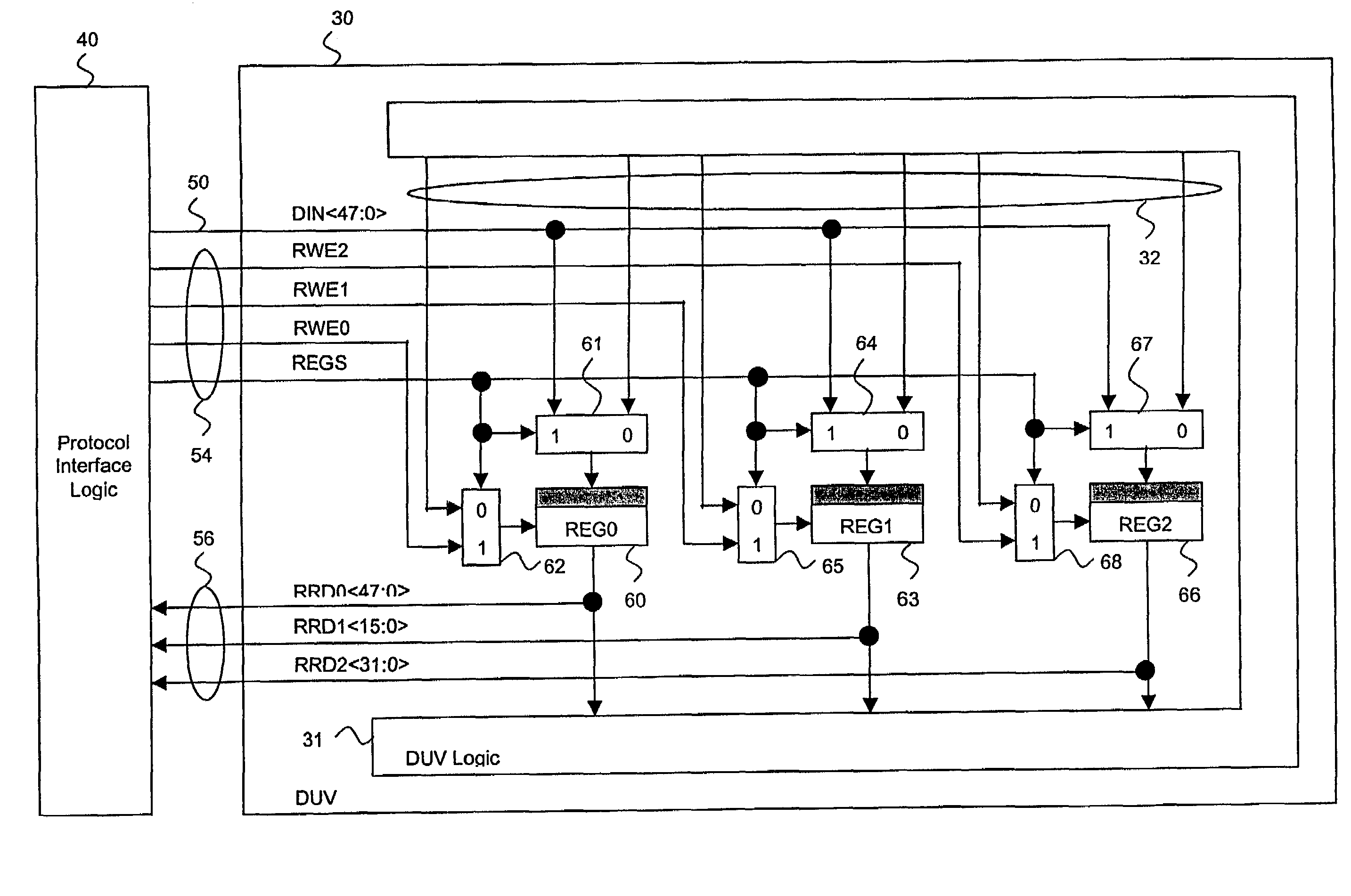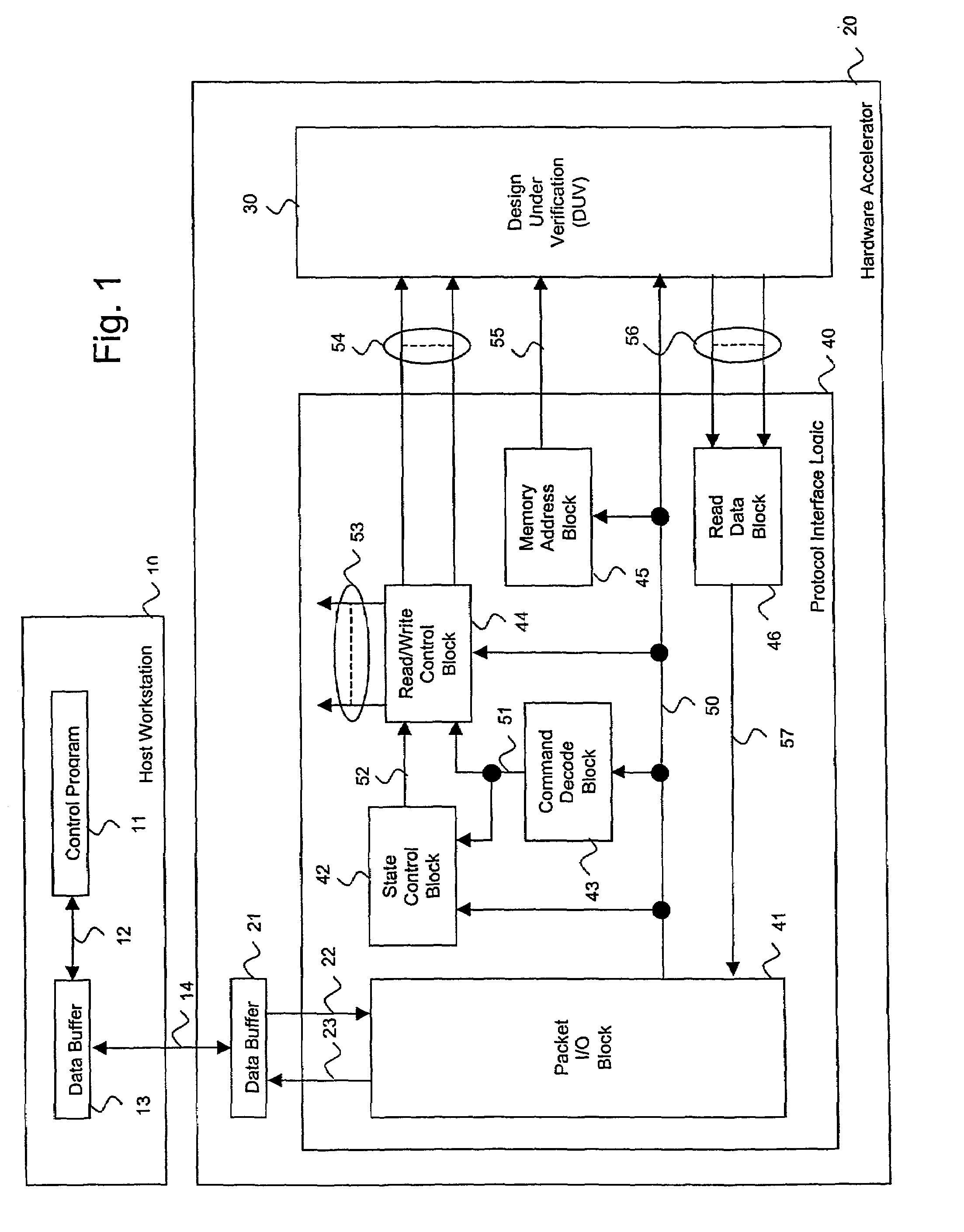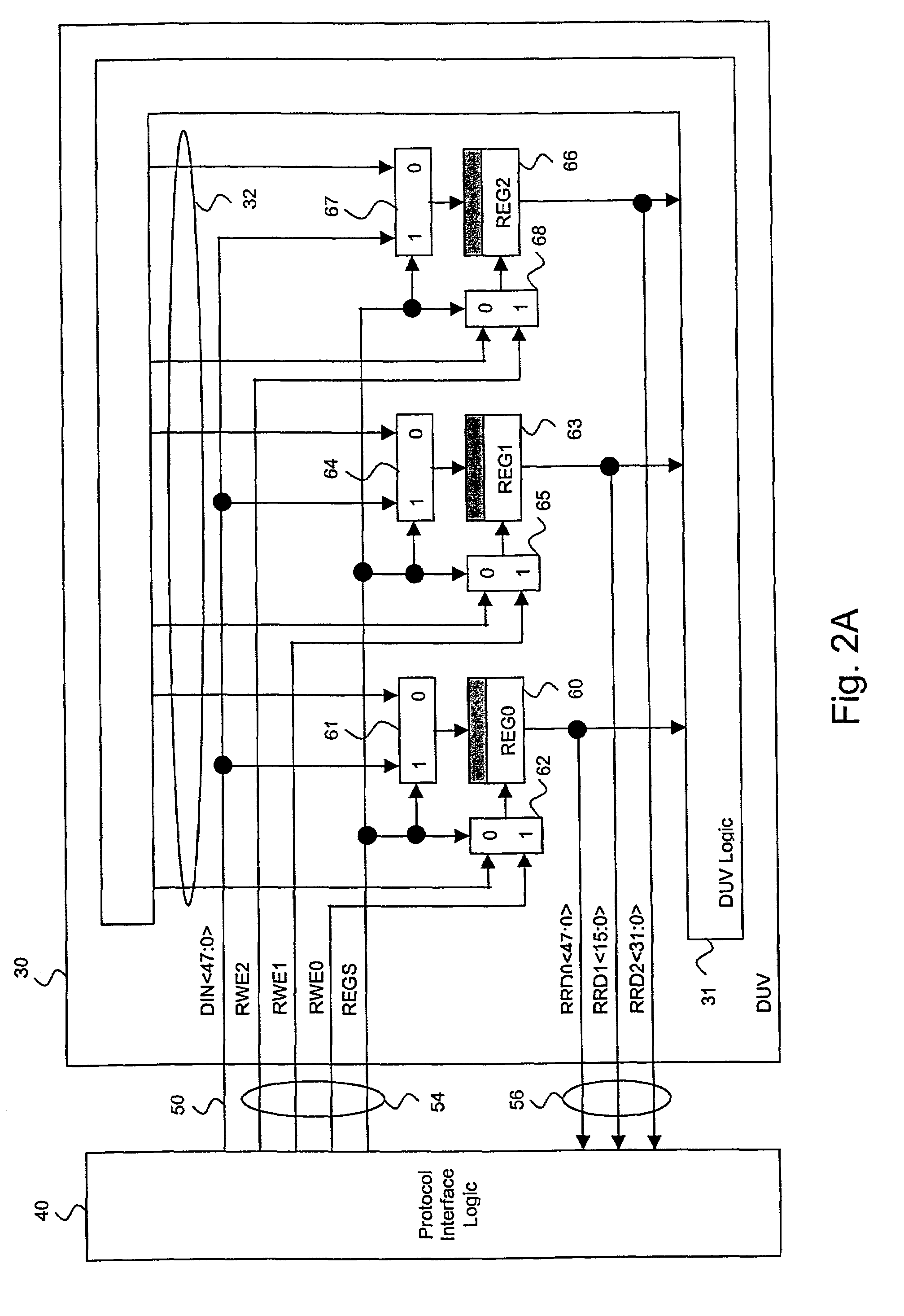Hardware-assisted design verification system using a packet-based protocol logic synthesized for efficient data loading and unloading
a hardware-assisted design and verification system technology, applied in the field of hardware-assisted design verification systems, can solve the problems of not being easy to find by users, getting more difficult to debug the duv at later design verification stages, and not being easy to implement hardware-assisted verification systems
- Summary
- Abstract
- Description
- Claims
- Application Information
AI Technical Summary
Benefits of technology
Problems solved by technology
Method used
Image
Examples
Embodiment Construction
[0047]Turning to the figures, the presently preferred apparatus and methods of the present invention will now be described.
[0048]FIG. 19 is a flow chart showing a presently preferred method of the invention. The first step 200 shown in FIG. 19 is to identify memories and registers present in the DUV. In one embodiment, this first step 200 involves identifying all of the memories and registers of the DUV. In another embodiment, this first step 200 involves identifying only a subset of the memories and registers present in the DUV. In this embodiment, the user must identify those memories and registers that are of particular concern or interest. An advantage to only identifying a subset of the memories and registers of the DUV is that the DUV can be compiled for verification more quickly. However, by only identifying a subset of the memories and registers, the advantages provided by the various embodiments of the present invention will be limited to those specific memories and registe...
PUM
 Login to View More
Login to View More Abstract
Description
Claims
Application Information
 Login to View More
Login to View More - R&D
- Intellectual Property
- Life Sciences
- Materials
- Tech Scout
- Unparalleled Data Quality
- Higher Quality Content
- 60% Fewer Hallucinations
Browse by: Latest US Patents, China's latest patents, Technical Efficacy Thesaurus, Application Domain, Technology Topic, Popular Technical Reports.
© 2025 PatSnap. All rights reserved.Legal|Privacy policy|Modern Slavery Act Transparency Statement|Sitemap|About US| Contact US: help@patsnap.com



